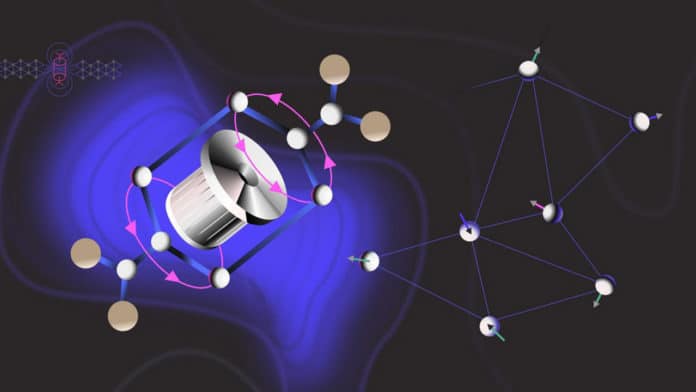The exotic properties of quantum spin liquids (QSLs) have continually been of interest since Anderson’s 1973 groundbreaking idea. Unlike the everyday liquids we know, the QSL has to do with magnetism – and magnetism has to do with spin.
It is well known that magnetism arises from a peculiar property called spin. What is significant for magnetism is that spin turns all of a material’s billions of electrons into a tiny magnet with its magnetic direction. However, the electron spins aren’t isolated; they interact with one another in various manners until they settle to shape different magnetic states, allowing the material to have a place with magnetic properties.
The exciting thing about QSLs is that they have several applications. As they come in varieties with different properties, QSLs can be used in quantum computing, telecommunications, superconductors, spintronics, and a host of other quantum-based technologies.
But before exploting them, we initially need to increase a solid understanding of QSL states. To do this, they need to discover ways to produce QSLs on demand– a task that has proven difficult so far, with only a few materials on offer as QSL candidates.
In a new study, scientists led by Péter Szirmai and Bálint Náfrádi at László Forró’s lab at EPFL‘s School of Basic Sciences have successfully produced and studied a QSL in a highly original material known as EDT-BCO. The system was designed and synthesized by the group of Patrick Batail at Université d’Angers (CNRS).
The structure of EDT-BCO is what makes it possible to create a QSL. The electron spins in the EDT-BCO form triangularly organized dimers, each of which has a spin-1/2 magnetic moment, which means that the electron must fully rotate twice to return to its initial configuration. The layers of spin-1/2 dimers are separated by a sublattice of carboxylate anions centered by a chiral bicyclo octane. The anions are called “rotors” because they have conformational and rotational degrees of freedom.
Szirmai said, “The unique rotor component in a magnetic system makes the material special amongst QSL candidates, representing a new material family. The subtle disorder provoked by the rotor components introduces a new handle upon the spin system.”
All the techniques affirmed the absence of long-range magnetic order and the emergence of a QSL. So, EDT-BCO officially joins the limited ranks of QSL materials and makes us a step further into the next generation of technologies.
Bálint Náfrádi said, “Beyond the superb demonstration of the QSL state, our work is highly relevant because it provides a tool to obtain additional QSL materials via custom-designed functional rotor molecules.”
The study was done in collaboration with CNRS and Université d’Angers, Czech Academy of Sciences, CNRS and Université de Paris-Sud, Goethe-Universitat Frankfurt, Science, and Technology Facilities Council (ISIS Muon Group) and Paul Scherrer Institute.
Journal Reference:
- Péter Szirmai et al. Quantum spin-liquid states in an organic magnetic layer and molecular rotor hybrid. PNAS 05 November 2020. DOI: 10.1073/pnas.2000188117
